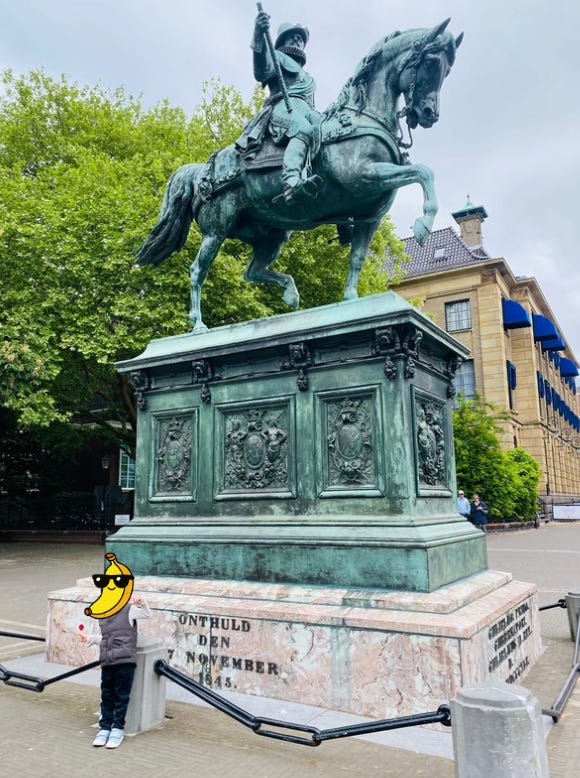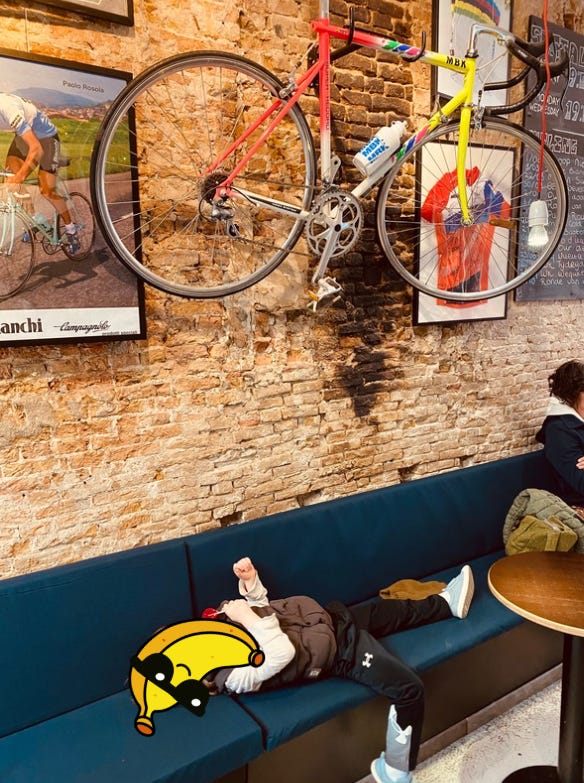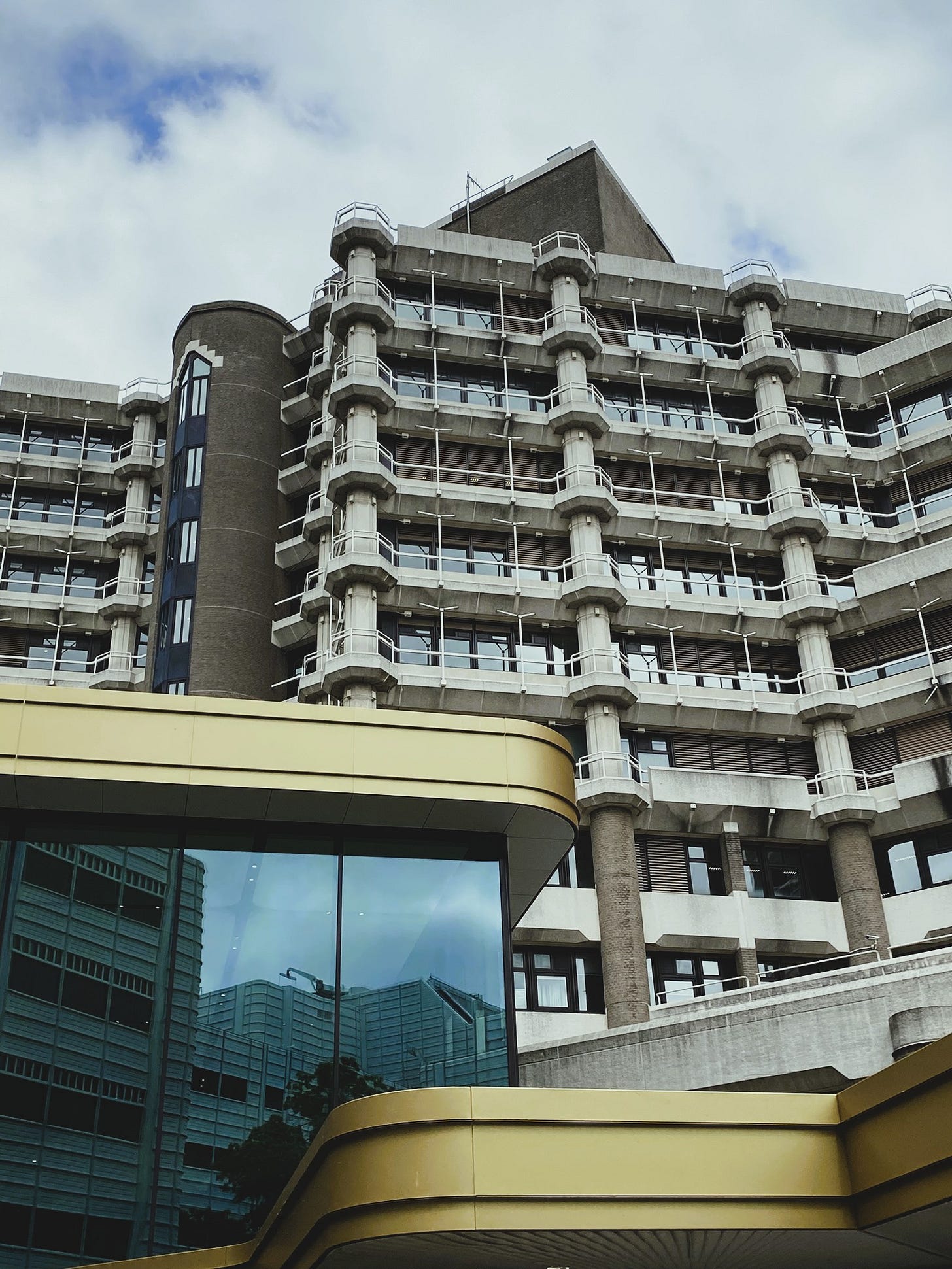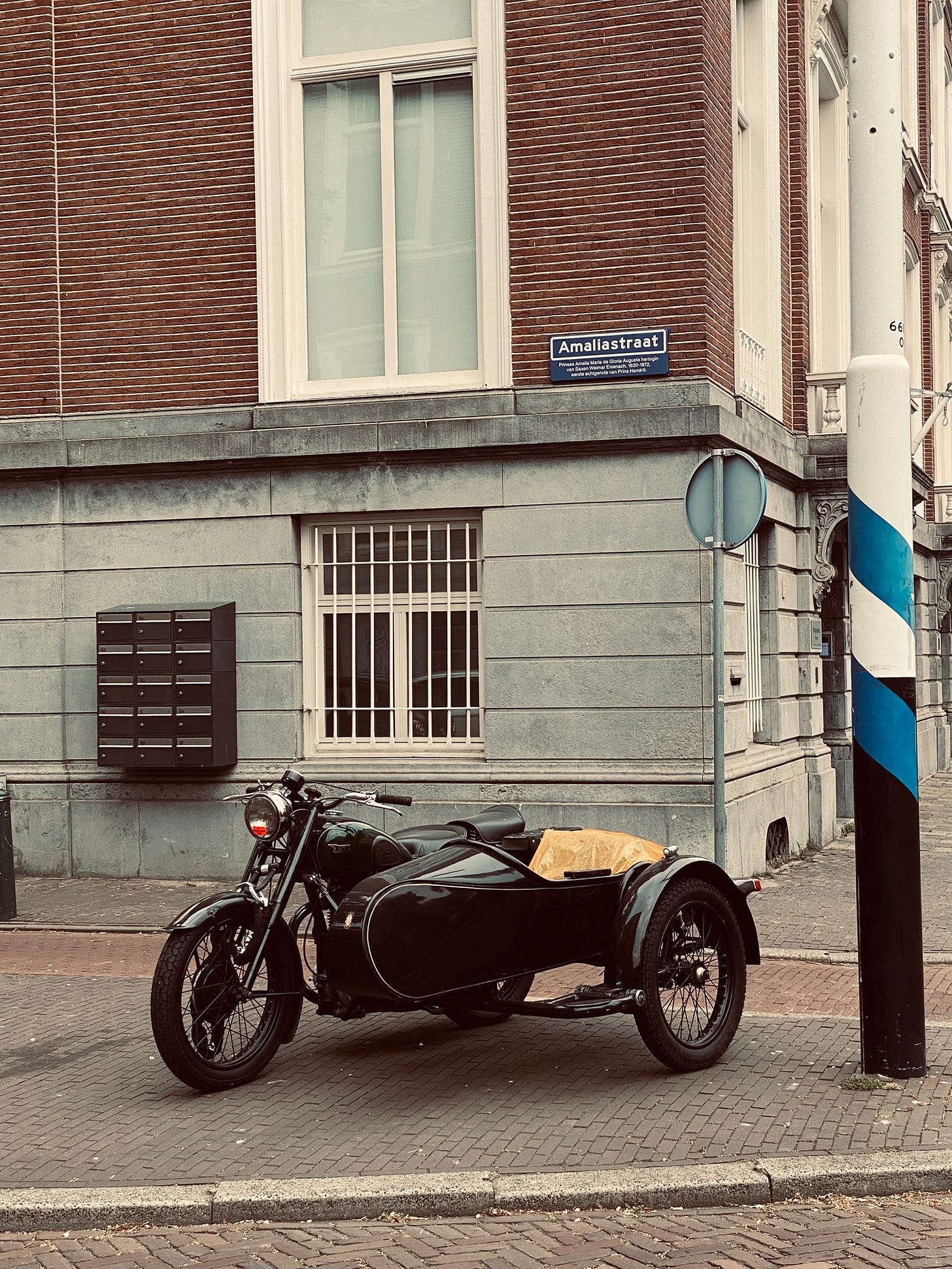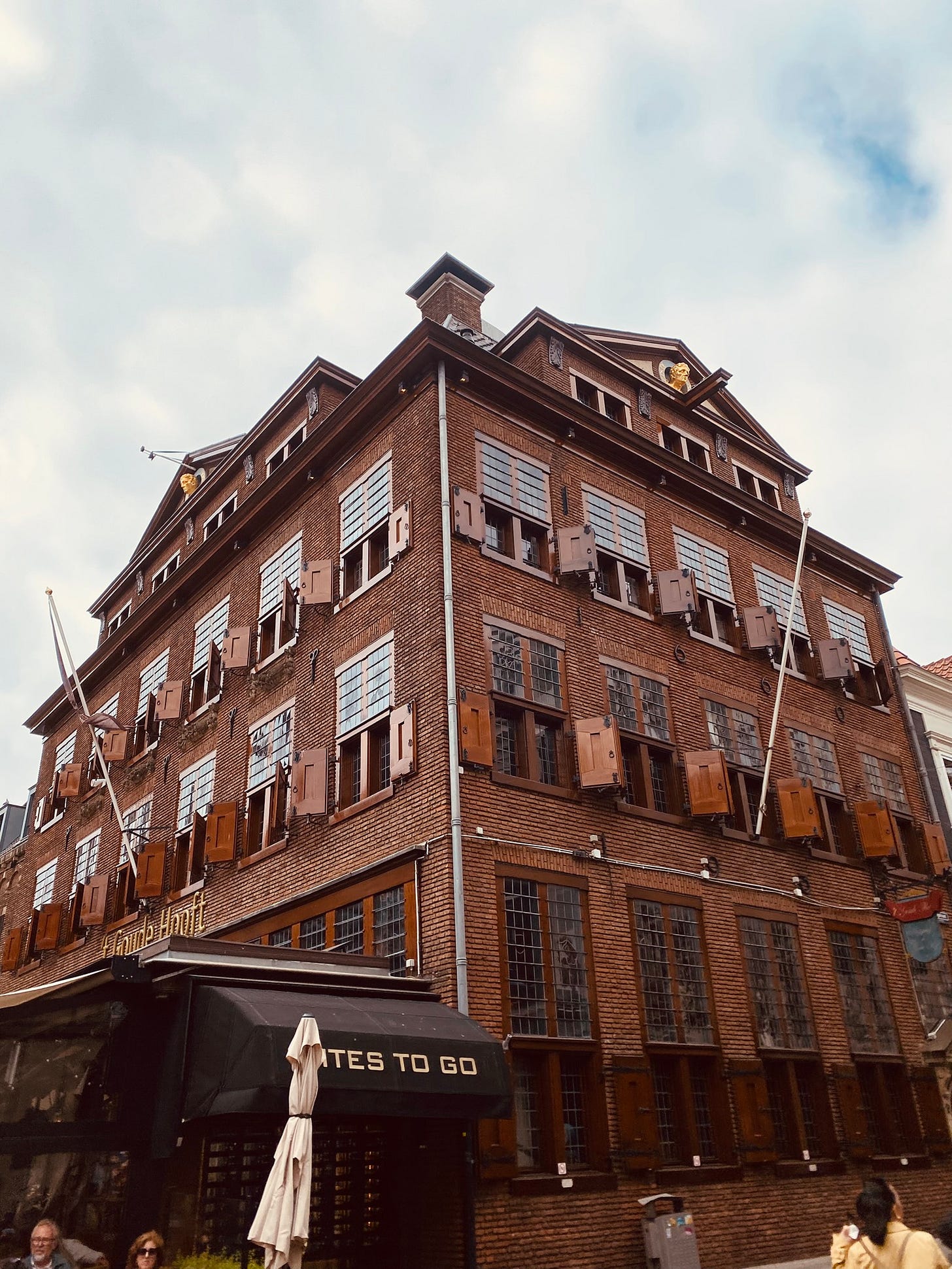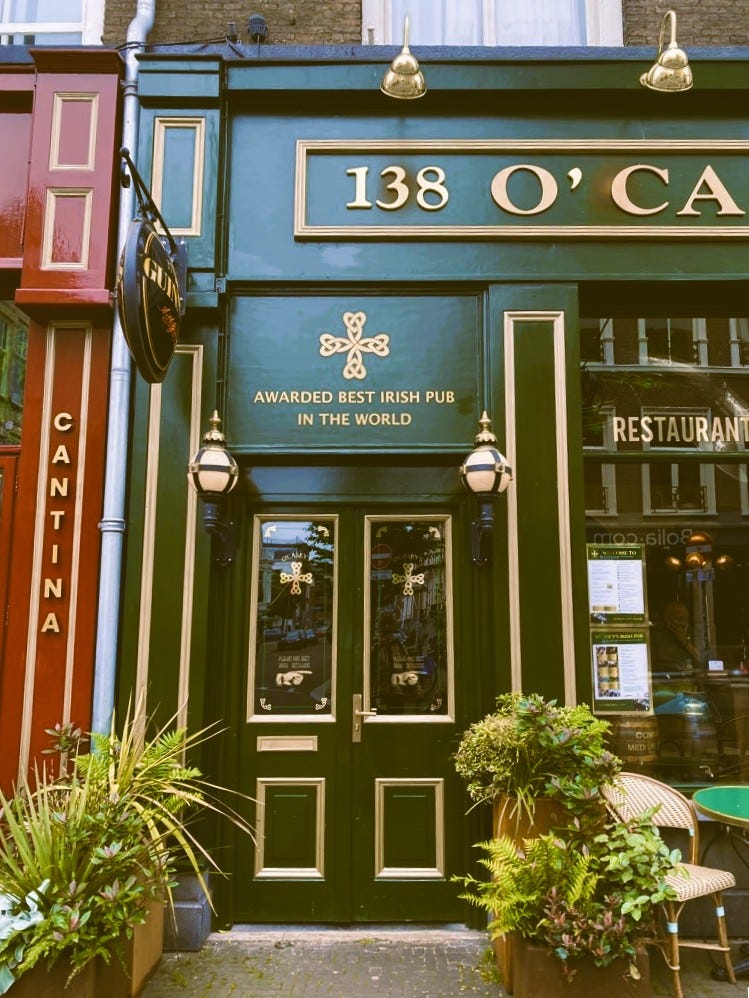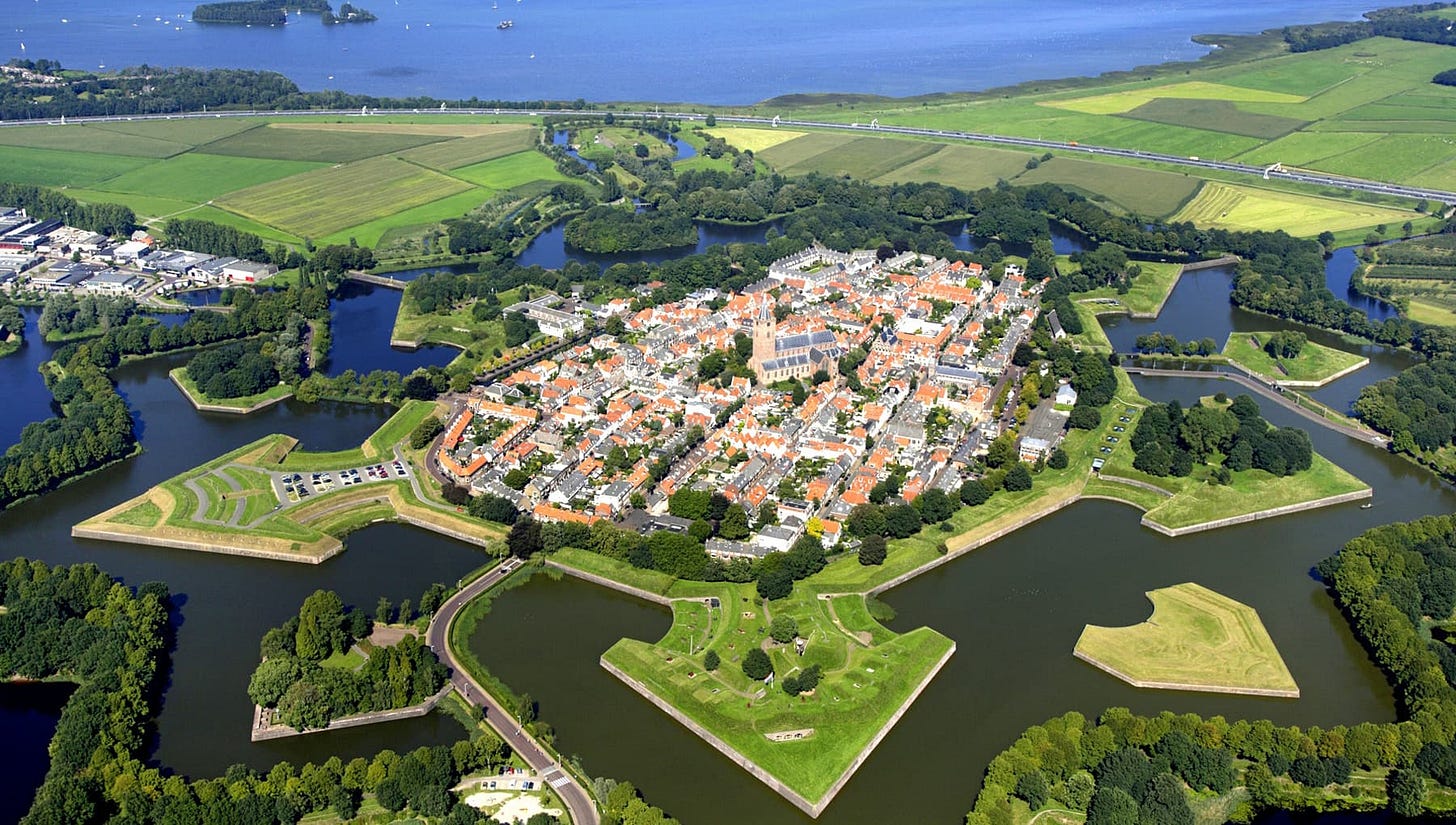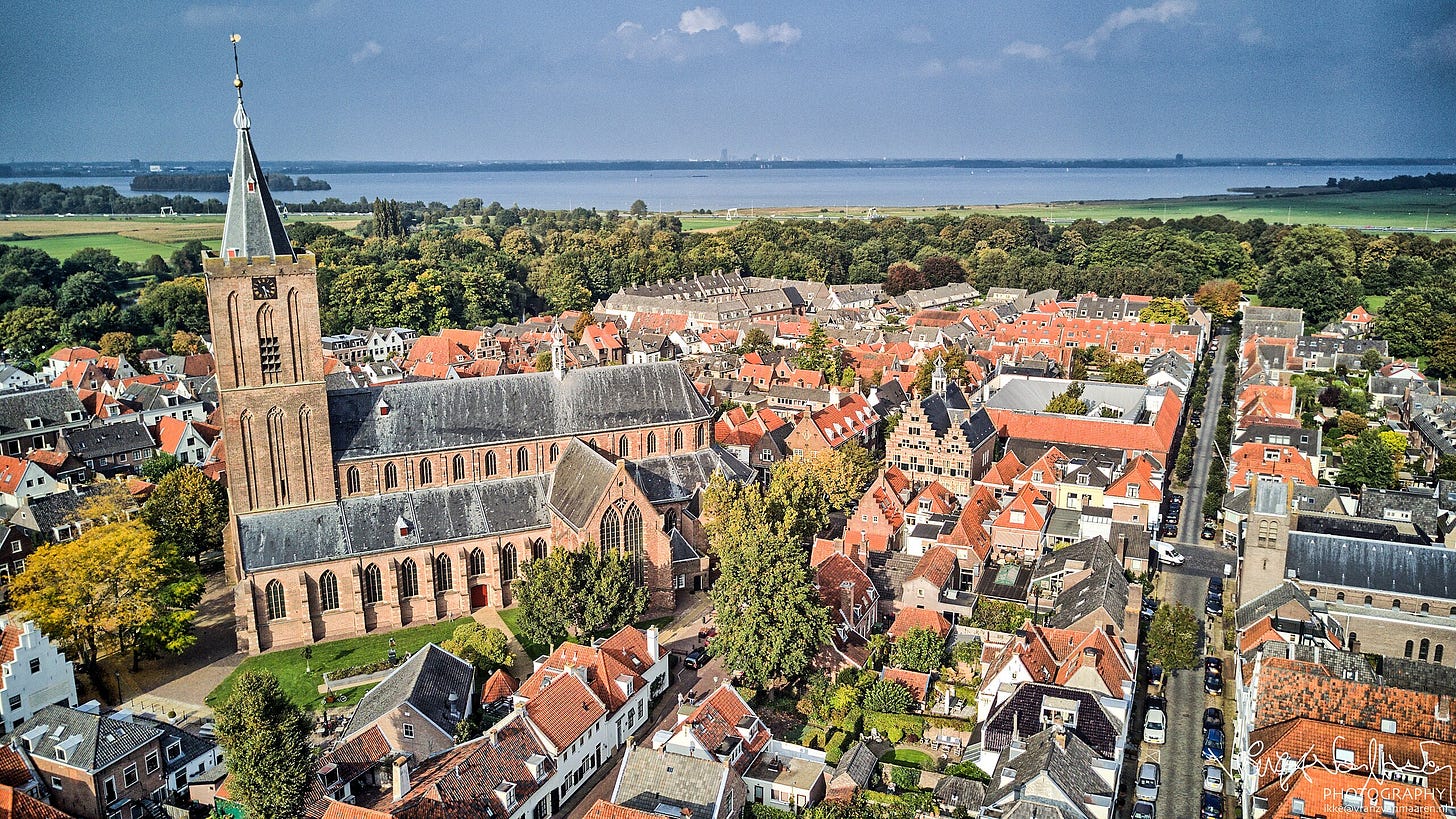Weekend in Review
...and the circular reference of celebrity philosopher kings
A great long weekend here in the Netherlands.
Spent all day Friday in The Hague with my youngest, who was off from school. Friday night, I hit up Dopey’s Elixer in Amsterdam for my South African-Dutch friend’s birthday. It was a classic dad beer hang — except I was the only American. Conversation bounced between Dutch and English. I really have to learn this beautiful, guttural language faster.
Saturday was class/camp day for the boys — LEGO Robots and Kung-Fu. I opted for a long, two-hour walk home while my wife took the boys home for lunch in the bakfiets.
Yesterday, we drove (we use a Zipcar-like service that’s super easy and cheap) to this ridiculously awesome place called Speelpark Oud Valkeveen— a sprawling yet low-key kids' amusement park with play structures and a few mechanical rides. On the way there, we passed through the elite Dutch neighborhood of Valkeveen, replete with over-the-top mansions and farm estates.
On the way back, we drove through the 700-year-old fortified town of Naarden, which completely blew us away. We’ll be going back soon for a day trip.
But first, the circular reference of celebrity philosopher kings
Last night, my friend and financial advisor (don’t listen to midwit internet anons - get one) sent me Sam Parr and Shaan Puri’s latest My First Million podcast episode with Scott Galloway because it touched on almost all the themes I talk about on X and here on Substack. I listened to it on 2x speed, of course. They touched on a lot — the big ones being investing stories and his wins and failures, wealth versus health, and the meaning of life. But one of the things he said struck me and got me thinking. Galloway said that he’s still — I’ll use wording from my framework — trying to break out of his “coding.”
Here are some of his most powerful quotes —
From his recent Buddhist readings:
The person with good health has thousands of problems.
The person with bad health has one problem.
On his friends dying:
Something happens in your 50s, and it’s really awful. Two or three of your friends die. Weird genetic shit pops up…
He went on to talk about how two of his friends — healthy, great families, great lives, great careers — both died of random diseases: neurological and cancer.
On waiting:
…If you’re waiting to have washboard abs…
If you’re waiting to find the perfect spouse…
If you’re waiting to have more money…
Don’t wait.I mean, really try to take advantage of the moment. Tell people you love them. Be nice to yourself. Be kind to yourself. Enjoy yourself. Because it’s going…
On freedom:
… I think about the notion of freedom. I always thought that money would give me the freedom I wanted — and it has given me some freedom from the economic anxiety I’ve always had, and it’s given me a lot of options.
But what I’ve figured out as I’ve gotten older is that true freedom is releasing yourself from the conventions and expectations of broader society — around what I should write or what I should say or how I should condition something and say it.
And I still haven’t found the freedom of releasing myself from the conventions of expectations.
He goes on to talk about how all he wants to do with his public persona and media presence is to catalyze conversations that improve ourselves and find solutions — but he still struggles to truly go unfiltered.
I’m still too fucking worried about being shamed. Or getting it wrong. Or saying something stupid. Or disappointing people. Or not being liked by strangers.
So I still am not free.
On the meaning of life:
I think a lot about what it means — as I barrel toward the end — to have real freedom. Because if you’re just focused on getting to a certain point and think that you’re going to find the perfect X, Y, or Z? No.
You’re here to learn.
You’re here to enjoy yourself.
You’re here to be as kind as possible.
You’re here to surround yourself with as many people as possible who love you — and let you love them.
But I’m trying to get off this hamster wheel of constant ambition and engage in true freedom.
And I’m still not there.
Scott is dishing out heavy wisdom… but something tells me that most listeners were thinking this: “I totally agree… but only after I’ve made my first million.”
I mean… the title of the podcast episode is “How Scott Galloway Turned $8M into $120M Through Investing.”
That’s what hooks people in.
They want to hear about Galloway’s take on investing — where he’s putting his money (he thinks the USA is going to experience a 10 –15 year downtrend, but I’d caution that his investment views are tainted by his emotions around the political chaos of the moment). People want to hear about how he thinks distressed is the best asset class, and how that’s where he’s made most of his money… and how he’s so rich and successful that he gets rare deal flow that others don’t… and how he’s worked so hard over his life in the markets that he knows more than the average bear — all to caution people against going over their skis, risking capital on whims instead of being deeply informed with special access to special situations like him.
But there is a deep irony in Scott talking about how health is more important than wealth — how all that really matters is that you enjoy yourself, be around loved ones, don’t wait to do things — from the philosophical pedestal of spending the first several decades of his life not doing those things or at least not talking about the alternatives.
Sadly, I think, because the natural logical outcome of such thinking and reflection is ultimately a degrowth mindset — one that’s either politically a third rail or makes you come off as an unserious person. And there’s really no solve for the fact that meaningful damage to the current system — despite all its flaws — from pursuing degrowth would probably be more devastating than continuing with the current system as-is.
It’s the circular reference of celebrity philosopher kings: the only ones allowed to question the system are those who’ve been most rewarded by it. Because they’ve “earned” the credibility and wisdom — and financial and lifestyle comfort — to be able to do so. So their message is heard — but rarely acted on. It lands as much like a confession of the old as guidance for the young.
The true test would be giving Scott the choice: if he had a chance to go back in time 30 years and relive his life, knowing what he knows now — but he’ll never be successful financially, and nobody will ever know who he is outside of his close friends and family — would he do it?
I’d hope so. But something tells me — perhaps it was Scott himself — that it’s harder to break through conventions and expectations even when we know they’re made up… and often, harmful.
Now back to the weekend…
Every two years in the south of Amsterdam — Amsterdam-Zuid — there's Art Zuid, a large-scale outdoor sculpture exhibition that transforms the broad avenues and green boulevards of the city’s museum quarter into an open-air gallery. It typically runs from May through September and features dozens of contemporary sculptures and installations from artists around the world.
The cool thing about Art Zuid is its accessibility — you don’t need a ticket, and you don’t need to know anything about art. You just walk through the neighborhood, filled with stately brick homes and historic hotels (like the Hilton, where John Lennon and Yoko Ono staged their famous Bed-In for Peace protest), and encounter these giant abstract forms, strange surreal figures, or playful pieces like what our kids call “straws for giants” — or an armless bronze man staring into the distance. The whole thing feels like a quiet, clever disruption of everyday life.
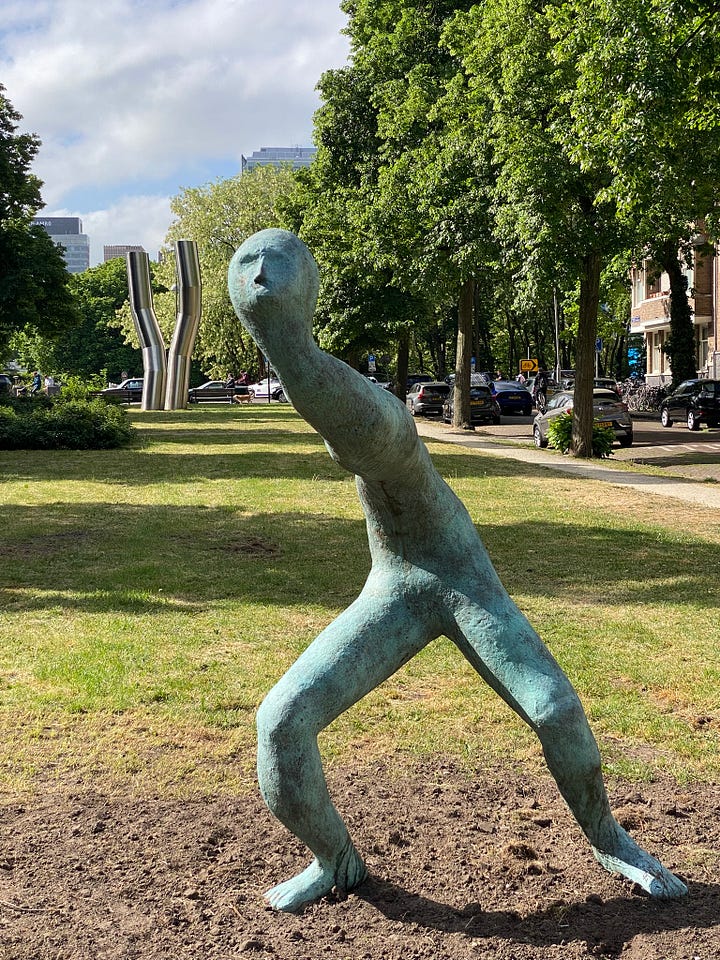
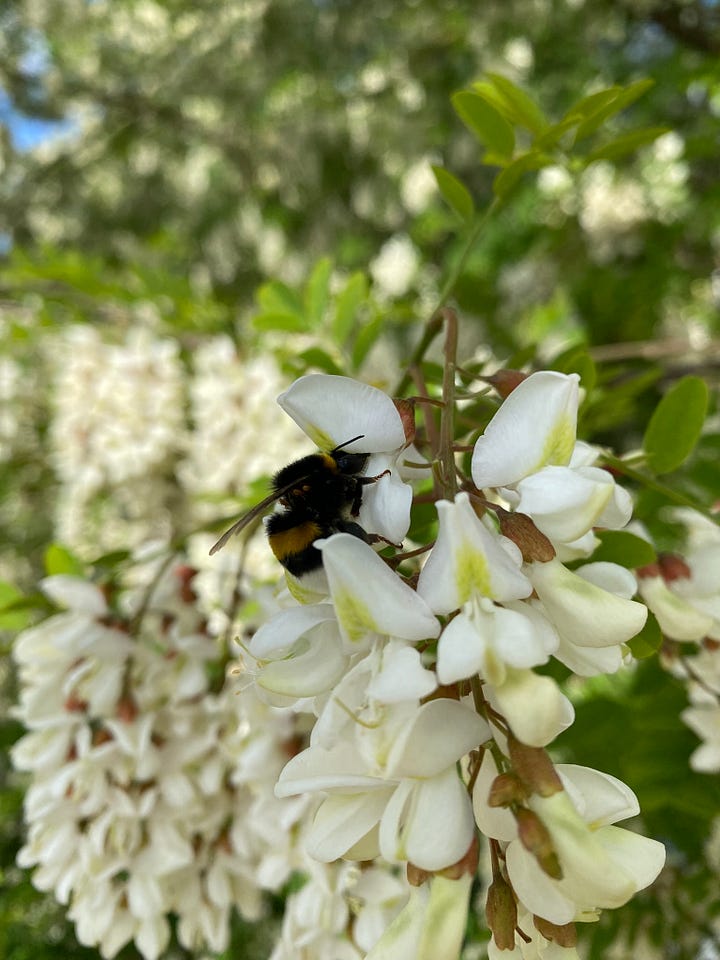
Once we got to The Hague — about an hour by train from Amsterdam — we made our way to the Children’s Book Museum (Kinderboekenmuseum), which is tucked into the national literature and arts complex near the main station. It’s part museum, part interactive playground, all centered around Dutch children’s literature.
The vibe is very Dutch in the best way… imaginative without being overstimulating. There are immersive story rooms, tunnels and obstacles, poetry installations, and tons of little surprises built into the architecture. It’s like a literary funhouse aimed at sparking creativity and letting kids physically explore the world of books. My youngest was completely absorbed… and it was hard to leave.
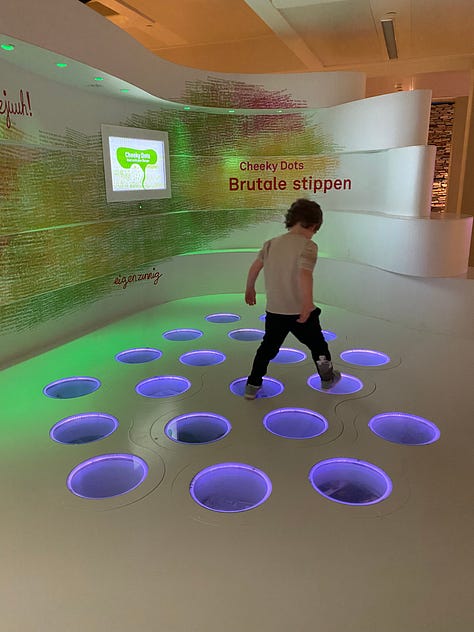
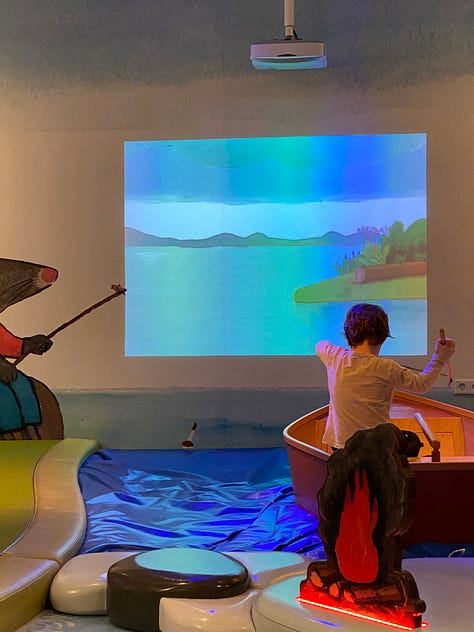
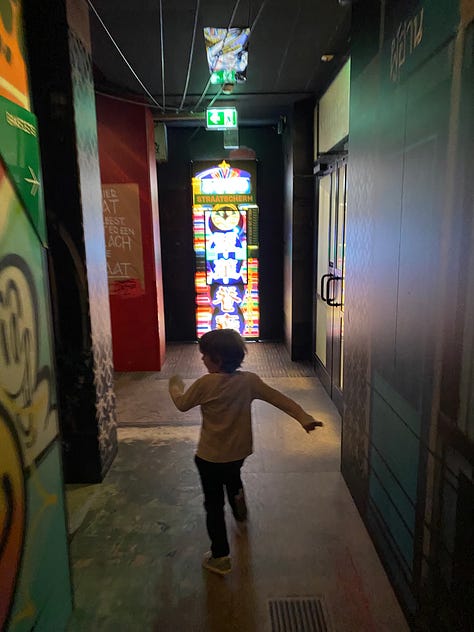
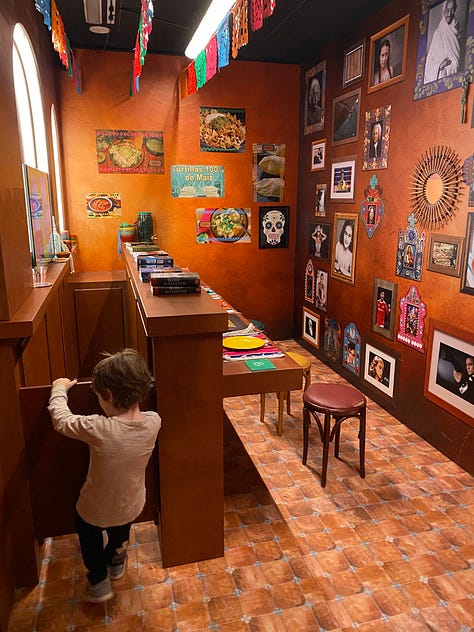
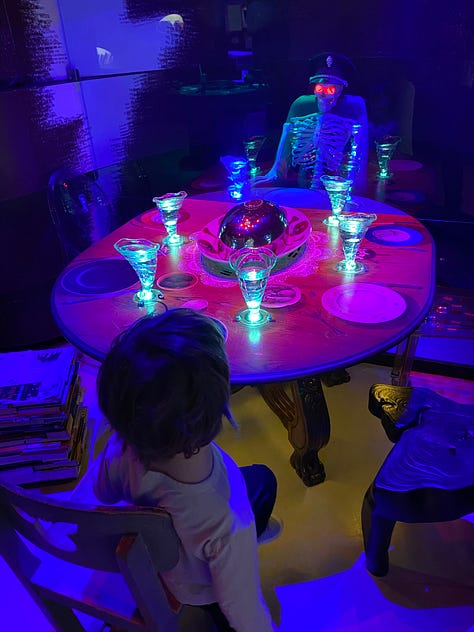
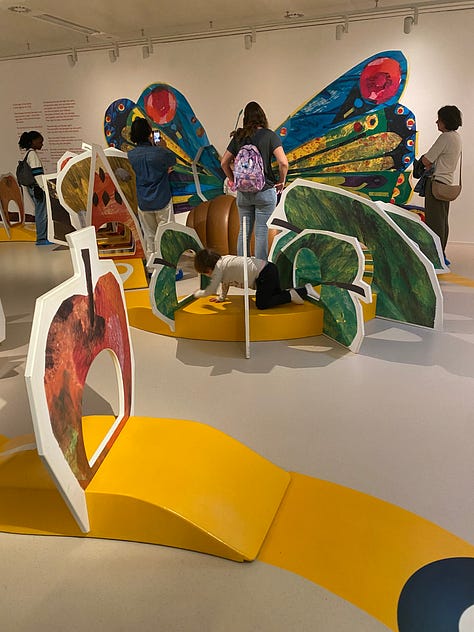
Starving, we walked to Rootz — an awesome pub tucked into a historic 17th-century coach house in the heart of The Hague. My son got a classic tosti and an appelsap, while I ordered a Westmalle and a plate of nachos (best I’ve had in Europe so far) to nurse my tired shoulders — tired from carrying him on them for several kilometers through the city.
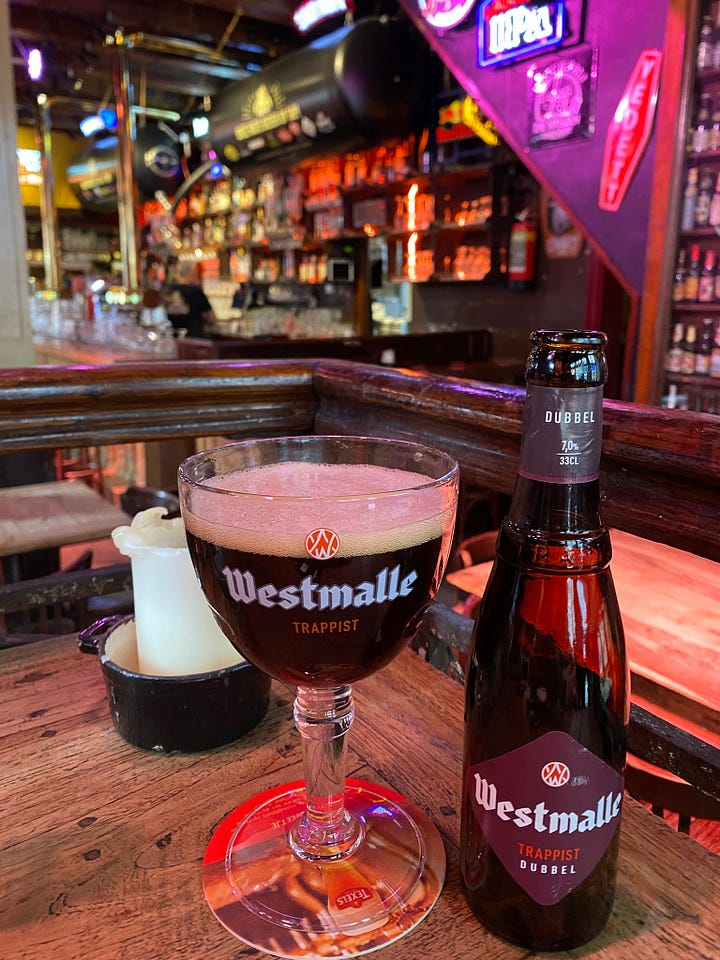

Then we walked around The Hague for an hour or so. We stopped in Jamin — a candy chain founded in 1870 (doesn’t look it) where we grabbed just one piece (a candy eyeball!) — then wandered through the winding alleys filled with bars, restaurants, cafés, and shops. It’s easy to get lost in those alleys — a staple of old European cities. Easy to imagine the stories tucked into the corners… diplomats, artists, maybe even some spies. Lots of cool sights to see.
Saturday morning was LEGO Robots and Kung-Fu camp day for the boys. Afterwards I decided to take a nice relaxing walk home. My wife took the boys back in the bakfiets (cargo bike).
Snapped some cool shots.
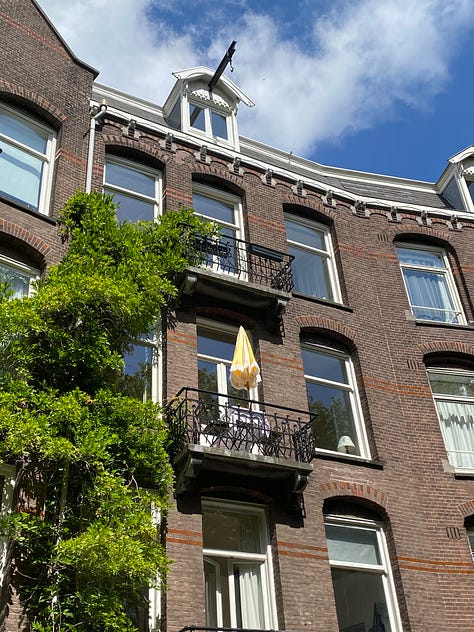
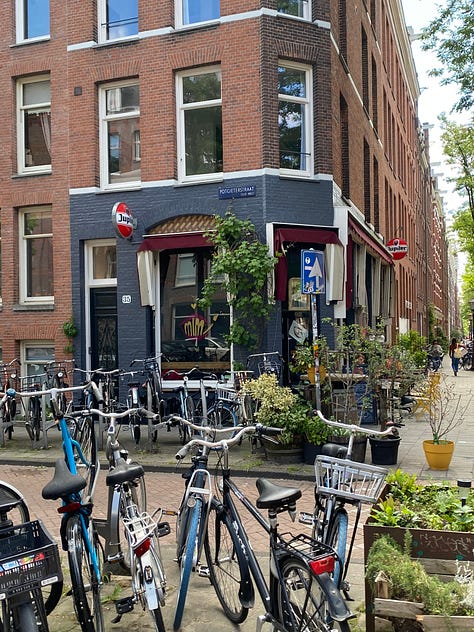
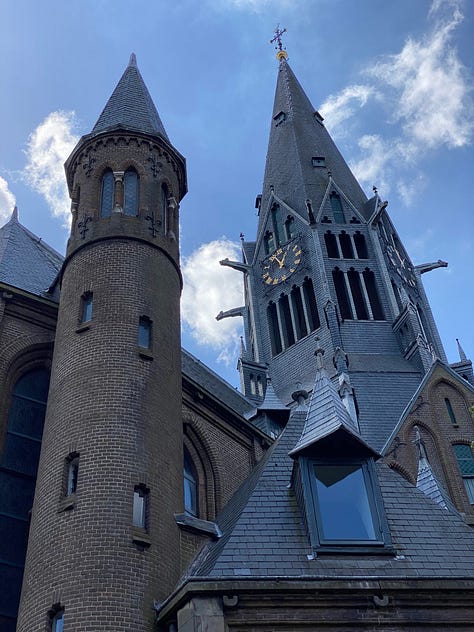
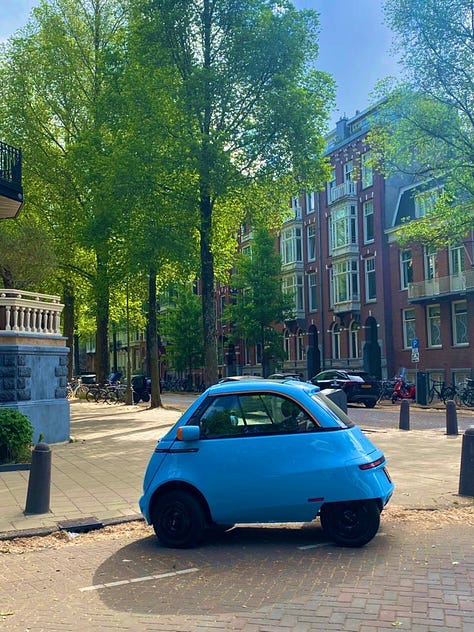
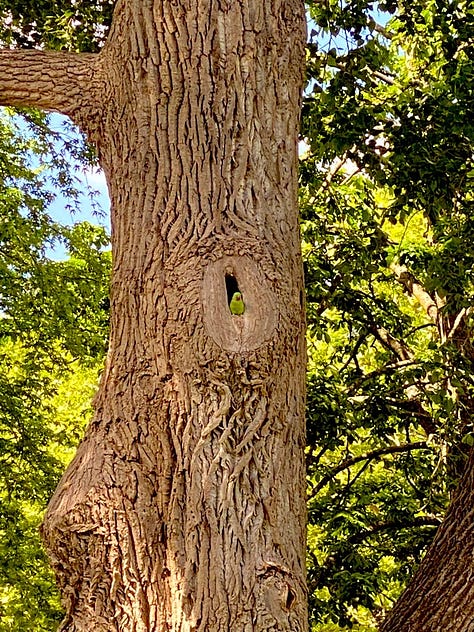
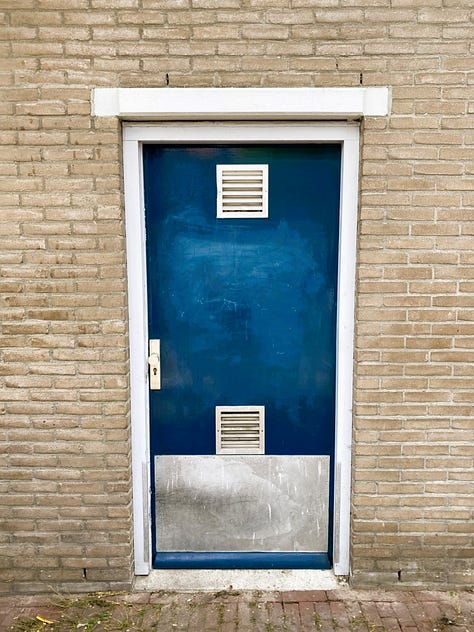
Sunday morning (after a late night of friendly birthday drinks), we drove out to Oud Valkeveen, a wonderfully scrappy, hands-on Dutch amusement park tucked between the woods and the lake. It’s one of those places that feels low-key and unpolished in the best way — part playground, part mini-theme park — and we ended up spending nearly the whole day there. My wife and I rode roller coasters and giant slides with the boys, even braved the big drop ride together — one of those slow-climb, heart-in-your-throat plunges that makes everyone laugh and scream at the same time. Just pure, chaotic fun.
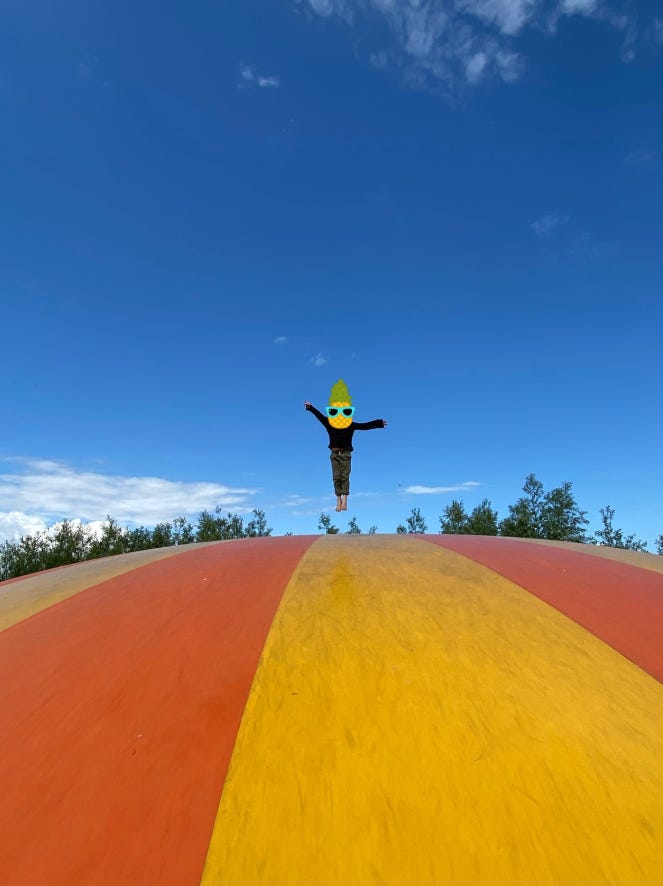
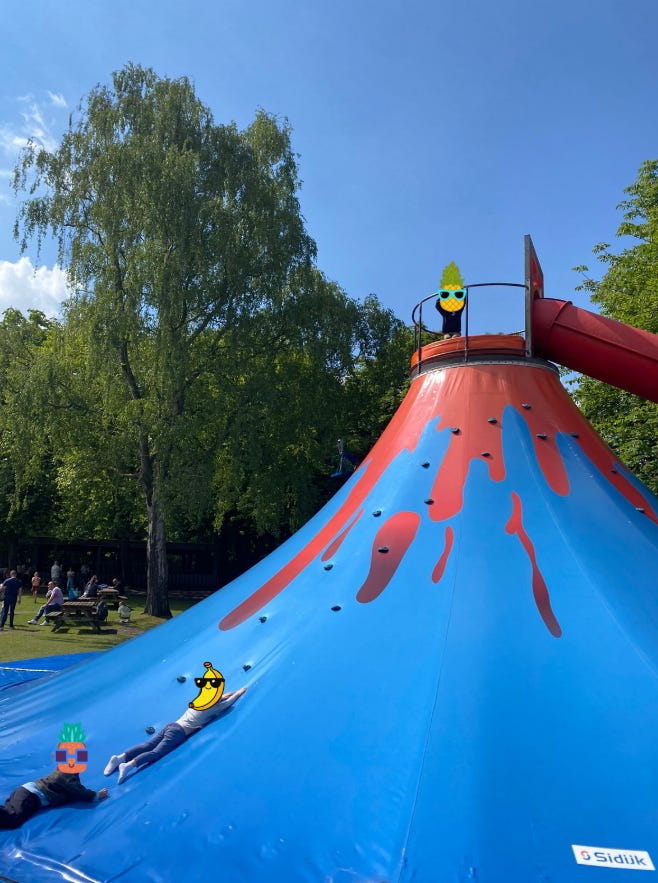
On the way home, we took a detour through Naarden, and driving up into it was surreal... the ancient walls rise out of the flat Dutch landscape, completely surrounded by a massive moat system. You cross what looks like a drawbridge to enter, and suddenly you're inside a star-shaped fortress town that dates back to the Middle Ages.
Naarden is one of the best-preserved fortified towns in Europe. It was the site of a brutal Spanish massacre in 1572 during the Eighty Years’ War — nearly the entire population was wiped out. Centuries later, it became a visual landmark for Allied bombers returning from missions over Germany in World War II, thanks to its distinct star-shaped layout, easily recognizable from the sky.
We’ll be going back soon for a proper day trip — it deserves more than a drive-through. Places like that make you feel like you accidentally fell through time… but that’s basically all of Europe.
We wrapped up the weekend with Indian takeout with my brother-in-law and his family. And I fell asleep — after listening to the Galloway interview — thinking about how little everything outside of today means in the grand scheme.




